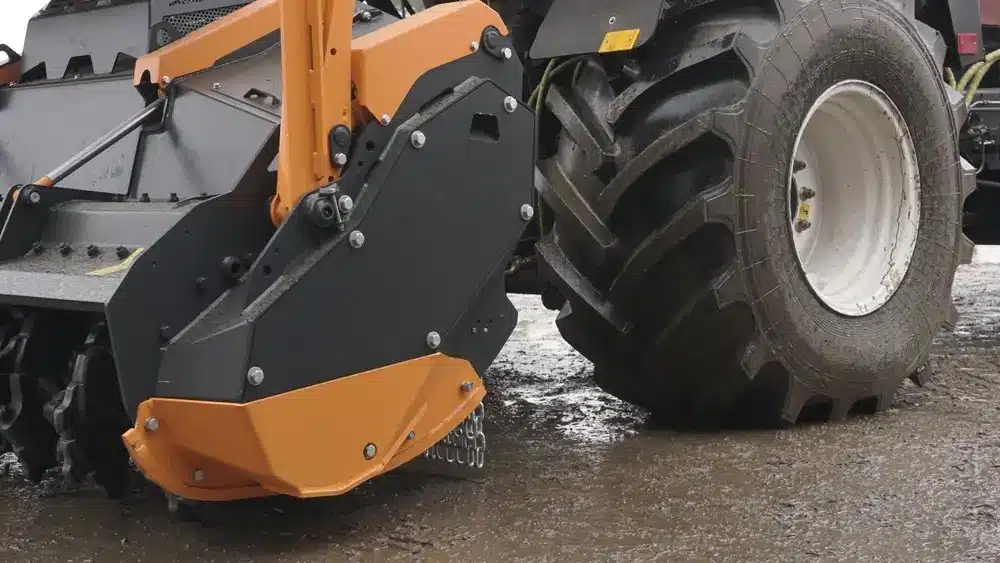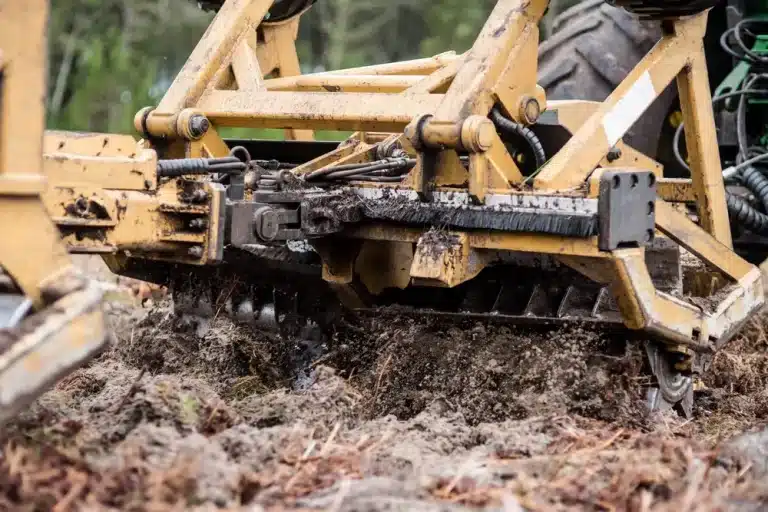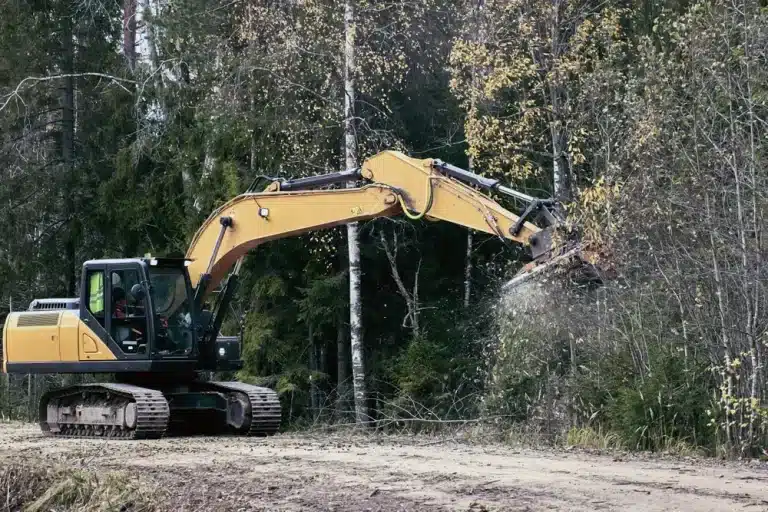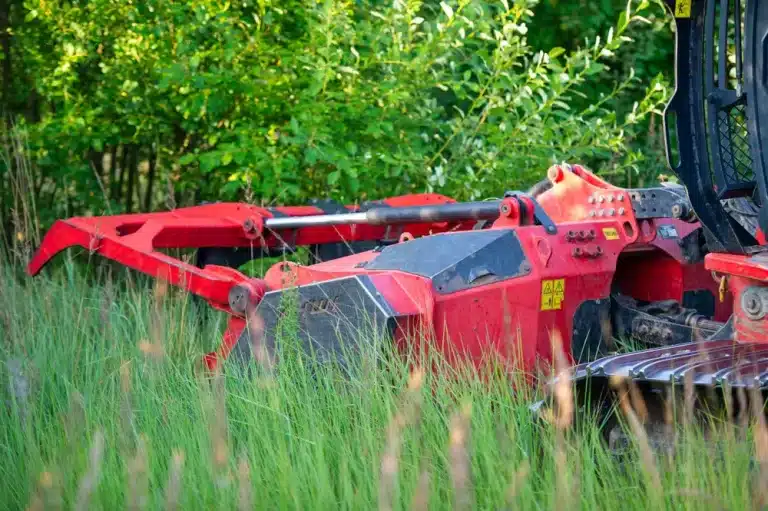In 2025, forestry mulcher prices in France vary widely depending on terrain, machine type, and local conditions. Whether you’re clearing dense growth in the Pyrenees or maintaining farmland near Toulouse, understanding what drives these costs will help you make smarter purchasing decisions.
What defines a professional forestry mulcher today?
Modern forestry mulchers are powerful, smart, and compliant with new safety and environmental regulations:
- Smart features: GPS mapping, remote diagnostics, and automated feeds
- High productivity: Skid steers clear 1–3 acres/day; large tractors, up to 15 acres/day
- Compliance: Emission-reduction systems and quieter drivetrain designs
- Daily cost: €1,000 to €2,200 including operator; €125–€300/hour
- Per-acre cost: €400–€800 depending on vegetation, slope, and soil
Attachments like quick-change teeth, dust shields, and reinforced tracks add both performance and cost.
What influences the price of a mulcher ?
Here are the key pricing factors in 2025:
- Horsepower: Higher HP = higher cost. A 150 kW model can cost double a 70 kW unit.
- Cutting capacity: Bigger drum width and stronger blades drive up price.
- Build quality: Reinforced steel frames and top-grade parts cost more but last longer.
- Brand value: Trusted brands charge more due to stronger support and resale value.
- Regulatory compliance: Machines meeting EU Stage V or US Tier 4 rules have pricier engines and components.
- Material costs: Steel and hydraulics fluctuate—expect pricing to reflect global supply shifts.
How features and models affect cost ?

Differences in model specs impact both performance and price:
| Machine Size | Horsepower | Drum Width | Throughput |
| Entry-level | 100–150 HP | 1.2–1.4 m | 5–10 t/hr |
| Mid-range | 150–250 HP | 1.5–2.0 m | 10–20 t/hr |
| High-end | 300–400 HP | 2.0–2.4 m | 25+ t/hr |
Tracked machines suit rough or muddy terrain. Wheeled units are better for flat ground and road mobility.
Add-ons like telematics, cab displays, and hydraulic quick-couplers can raise base costs by 10–25%.
Choosing the right machine for your workload
Match the machine to your job type:
| Job Type | Ideal Machine Type |
| Light undergrowth | 100–150 HP wheeled mulcher |
| Medium density brush | 150–250 HP disc mulcher |
| Dense forest | 250–400 HP drum mulcher |
Evaluate:
- Terrain: Tracked for slopes and mud, wheeled for hard surfaces
- Daily hours: More uptime means you’ll benefit from comfort and fuel savings
- Operator needs: Anti-vibration, ergonomic controls, and visibility improve productivity
Understanding purchase, lease, and rental pricing
Three pricing structures dominate:
| Model | Upfront Cost | Ownership | Ideal Use Case |
| Purchase | €25,000–€90,000 | Full | Long-term, daily or weekly use |
| Lease | €500–€1,200/mo | Eventual | Frequent users with budget limits |
| Rental | €300–€1,500/day | None | One-time jobs or short projects |
Used models range from €13,000 to €60,000, depending on age and condition. Refurbished units generally sit between €20,000 and €50,000.
Bundle discounts: Some dealers offer spare parts or service with multi-unit purchases or long-term leases.
Financing options to consider
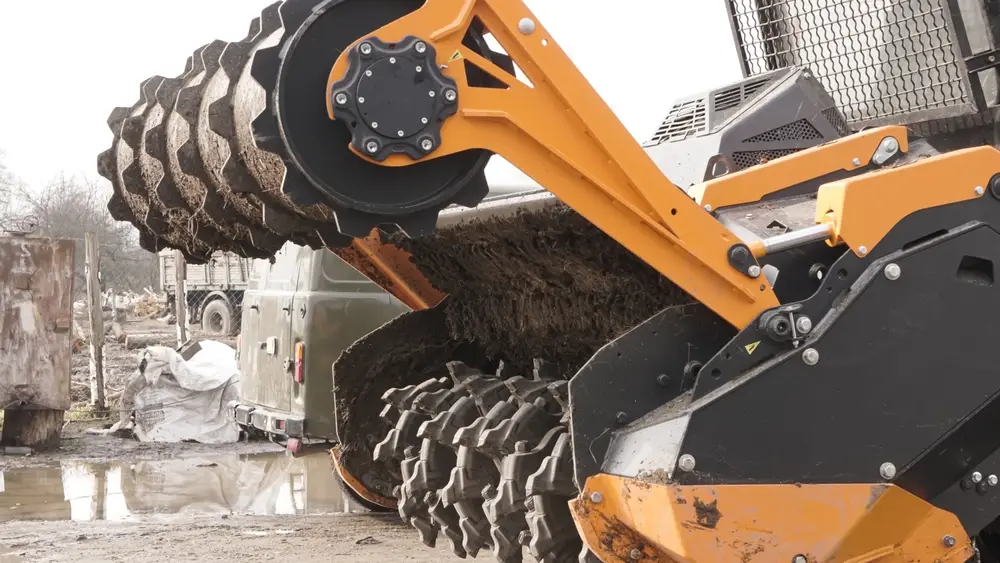
Most suppliers offer flexible payment options:
- Loans: 2–7 years, fixed interest
- Lease-to-own: Pay monthly, own at term’s end
- Trade-ins: Lower cost by exchanging older equipment
- Seasonal plans: Pay less during off-season, more during peak months
Ask about setup packages that include filters, blades, and basic training.
Avoiding mistakes when buying a mulcher
Here are common pitfalls to avoid:
- Buying too much or too little machine for your needs
- Forgetting to check tractor/carrier compatibility
- Overlooking support options in your region
- Ignoring hidden costs like blades, belts, or spare parts
- Failing to train your operators
- Skipping warranty review or field testing
Pro tip: Request a starter kit of maintenance parts and operator training as part of your deal.
How to maintain and maximize your investment
Basic upkeep is non-negotiable:
- Daily: clean filters, check bolts, grease key parts
- Weekly: inspect belts and hoses for wear
- Seasonal: perform full checkup and log usage hours
Always use OEM parts to avoid damaging the machine or voiding warranties. Track your service history in a dedicated log to catch patterns.
Proper maintenance = fewer breakdowns, higher resale value, and longer working life.
